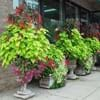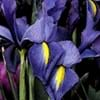Life Span
Perennial
Perennial
Type
Bulb or Corm or Tuber
Fruit
Origin
Mediterranean, Western Asia
Southeastern United States
Types
Not Available
Woodard, Tifblue, Garden Blue
Habitat
Mediterranean region
Barren pine land, Swamps
USDA Hardiness Zone
4-9
6-9
Sunset Zone
21,22
8, 9, 14, 15, 16, 17, 18, 19, 20, 21, 22, 23, 24
Habit
Clump-Forming
Upright/Erect
Flower Color
White, Yellow, Red, Blue, Purple, Pink, Lavender, Violet
White, Light Pink
Flower Color Modifier
Bicolor
Bicolor
Fruit Color
Not Available
Blue, Black
Leaf Color in Spring
Green
Green, Blue Green
Leaf Color in Summer
Light Green
Green, Blue Green
Leaf Color in Fall
Several shades of Green
Red, Green, Blue Green
Leaf Color in Winter
Light Green
Light Green
Leaf Shape
Long slender
Ovate
Plant Season
Spring, Winter
Spring, Summer, Fall
Sunlight
Full Sun, Partial Sun
Full Sun, Partial Sun
Growth Rate
Medium
Medium
Type of Soil
Loam
Loam, Sand
The pH of Soil
Acidic, Neutral
Acidic
Soil Drainage
Well drained
Well drained
Bloom Time
Early Spring, Spring, Late Winter, Indeterminate
Early Spring
Tolerances
Black Walnut Toxicity, Rabbit, Shade areas
Drought
Where to Plant?
Container, Ground, Pot
Ground
How to Plant?
chipping, Offsets, scooping, Twin scaling, Vegetative
Seedlings
Plant Maintenance
Low
Medium
Watering Requirements
Medium
Keep the ground moist but not water-logged
In Summer
Lots of watering
Lots of watering
In Spring
Moderate
Moderate
In Winter
Average Water
Average Water
Soil pH
Acidic, Neutral
Acidic
Soil Type
Loam
Loam, Sand
Soil Drainage Capacity
Well drained
Well drained
Sun Exposure
Full Sun, Partial Sun
Full Sun, Partial Sun
Pruning
Remove damaged leaves, Remove dead branches, Remove dead leaves
Requires very little pruning
Fertilizers
All-Purpose Liquid Fertilizer, General garden fertilizer, Time release fertilizer
All-Purpose Liquid Fertilizer, fertilizers high in ammonia
Pests and Diseases
Pests and diseases free
Birds
Plant Tolerance
Black Walnut Toxicity, Rabbit, Shade areas
Drought
Flowers
Showy
Insignificant
Flower Petal Number
Single, Double, Semi-Double
Single
Foliage Texture
Medium
Fine
Foliage Sheen
Glossy
Glossy
Allergy
Asthma
Not Available
Aesthetic Uses
Beautification, Bouquets, Cottage Garden, Landscape Designing, Showy Purposes
Showy Purposes
Beauty Benefits
Not Available
Not Available
Environmental Uses
Not Available
Food for birds, Wildlife
Medicinal Uses
Not Available
Not Available
Part of Plant Used
Flowers
Fruits, Whole plant
Other Uses
Decoration Purposes, Showy Purposes
Culinary use, Used As Food, Used as Ornamental plant
Used As Indoor Plant
Yes
No
Used As Outdoor Plant
Yes
Yes
Garden Design
Bedding Plant, Container, Cutflower, Mixed Border, Rock Garden / Wall
Edible, Fruit / Fruit Tree, Hedges, Mixed Border, Screening / Wind Break, Wildflower
Botanical Name
Hyacinthus orientalis
VACCINIUM ashei
Common Name
Hyacinth, common hyacinth, garden hyacinth, dutch hyacinth
Rabbiteye Blueberry
In Hindi
ह्यचीन्थ
Rabbiteye ब्लूबेरी
In German
Hyazinthe
Rabbiteye Blueberry
In French
jacinthe
rabbiteye Blueberry
In Spanish
jacinto
rabbiteye arándano
In Greek
υάκινθος
rabbiteye Blueberry
In Portuguese
jacinto
de mirtilo
In Polish
hiacynt
Rabbiteye Blueberry
In Latin
et hyacinthinas,
deerberry
Phylum
Magnoliophyta
Magnoliophyta
Class
Liliopsida
Magnoliopsida
Family
Liliaceae
Ericaceae
Genus
Hyacinthus
Vaccinium
Clade
Angiosperms, Monocots
Angiosperms, Asterids, Eudicots
Tribe
Not Available
Not Available
Subfamily
Scilloideae
Not Available
Number of Species
Not Available
Properties of Hyacinth and Rabbiteye Blueberry
Wondering what are the properties of Hyacinth and Rabbiteye Blueberry? We provide you with everything About Hyacinth and Rabbiteye Blueberry. Hyacinth doesn't have thorns and Rabbiteye Blueberry doesn't have thorns. Also Hyacinth does not have fragrant flowers. Hyacinth has allergic reactions like Asthma and Rabbiteye Blueberry has allergic reactions like Asthma. Compare all the properties and characteristics of these two plants. Find out which of these plant can be used as indoor plant. If you are interested to decorate your house and garden, find out aesthetic uses, compare them and select the plant which will beautify your surrounding. Along with beautification, try comparing medicinal and edible uses of Hyacinth and Rabbiteye Blueberry and you can choose the plant having best and most benefits.
Season and Care of Hyacinth and Rabbiteye Blueberry
Season and care of Hyacinth and Rabbiteye Blueberry is important to know. While considering everything about Hyacinth and Rabbiteye Blueberry Care, growing season is an essential factor. Hyacinth season is Spring and Winter and Rabbiteye Blueberry season is Spring and Winter. The type of soil for Hyacinth is Loam and for Rabbiteye Blueberry is Loam, Sand while the PH of soil for Hyacinth is Acidic, Neutral and for Rabbiteye Blueberry is Acidic.
Hyacinth and Rabbiteye Blueberry Physical Information
Hyacinth and Rabbiteye Blueberry physical information is very important for comparison. Hyacinth height is 10.20 cm and width 5.10 cm whereas Rabbiteye Blueberry height is 90.00 cm and width 90.00 cm. The color specification of Hyacinth and Rabbiteye Blueberry are as follows:
Hyacinth flower color: White, Yellow, Red, Blue, Purple, Pink, Lavender and Violet
Hyacinth leaf color: Green
Rabbiteye Blueberry flower color: White and Light Pink
- Rabbiteye Blueberry leaf color: Green and Blue Green
Care of Hyacinth and Rabbiteye Blueberry
Care of Hyacinth and Rabbiteye Blueberry include pruning, fertilizers, watering etc. Hyacinth pruning is done Remove damaged leaves, Remove dead branches and Remove dead leaves and Rabbiteye Blueberry pruning is done Requires very little pruning. In summer Hyacinth needs Lots of watering and in winter, it needs Average Water. Whereas, in summer Rabbiteye Blueberry needs Lots of watering and in winter, it needs Average Water.





